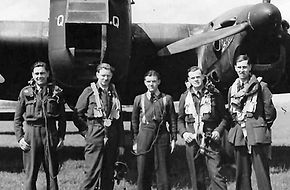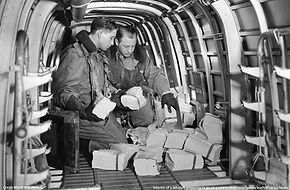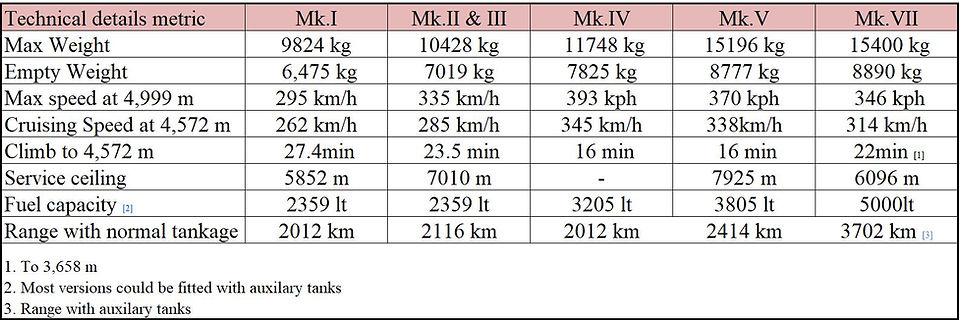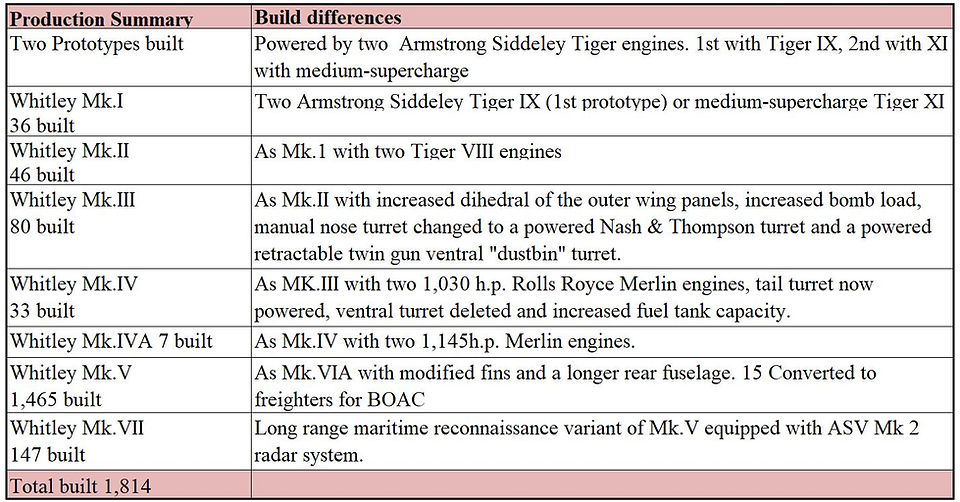
Armstrong Siddeley Heritage Trust
Armstrong Whitworth A.W.38 Whitley
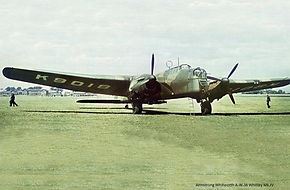

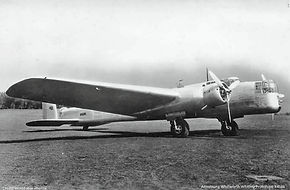
Of all the aircraft produced by The Sir W.G. Armstrong Whitworth Aircraft Ltd (to give it its official title) since its inception in 1913, the most important was, without doubt, the A.W.38 Whitley heavy bomber. It was produced in greater numbers than any other AWA designs (more than 1,800 examples of all marks) and also it made a major contribution to the development of aviation in general.
The genesis of the Whitley can be traced back to the earlier A.W.23 bomber/transport, although there were significant differences. The A.W.23 was produced to meet an Air Ministry specification issued in 1931 for an aircraft capable of carrying troops or bombs. Its competitors were designs from Handley Page and Bristol. It is interesting to note that while the Bristol design was preferred it was actually the designs from Armstrong Whitworth and Handley Page that were developed into mass produced bombers. Only one example of the A.W.23 was produced.
The construction of the Whitley followed that of the A.W.23 in that the principal structure of the wing (the wing spar) incorporated light alloy instead of steel and the use of light alloy was extended to the monocoque stressed skin construction of the fuselage (a method of construction only adopted by mass manufacturers of motorcars in the late 50s early 60s). The use of a retractable undercarriage was also continued from the earlier design. The most obvious difference between the two designs was the mid-wing positioning on the Whitley rather than the low wing on the earlier design.
The first flight of the Whitley occurred on 17 March 1936 powered by twin Armstrong Siddeley Tiger Mk IX engines but using the newly introduced three-blade, two-position de Havilland propellers. At the time, flaps, which changed the angle of air-flow over the wings were not in regular use, so the wing was set at a relatively high angle to the fuselage. Flaps were added later, keeping the landing speed of the Whitley very low (63mph) which was very popular with pilots and greatly facilitated its later use as a night bomber.
The following three images are of the A.W.23.
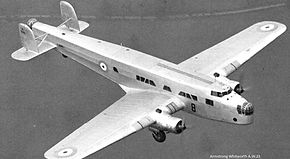

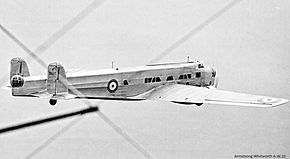
The first production Whitley was delivered early in 1937 but after only 34 Mk.Is had been produced the model was replaced by the Mk.II version powered by engines which incorporated a two speed supercharger, probably the first time such a supercharger had been fitted to a military aircraft. This was later followed by the Mk.III which was more powerfully armed and later by the Mk.IV fitted with Rolls Royce Merlin engines, one of the very few times that an Armstrong Whitworth aircraft used engines from an outside manufacturer.
As a likelihood of war became ever more apparent in the late 30’s further improvements were made resulting in the Mk.V, the most common version of the Whitley produced. As a result the Whitley was one of the five aircraft to be given overriding priority by the new Ministry of Aircraft Production (the others were the Spitfire, the Hurricane, the Bristol Blenheim and the Vickers Wellington). The Mk.V was at first the main bomber used for night missions and in fact on the first night of the war 10 Whitleys penetrated as far as Hamburg, Bremen and the Ruhr although the aircraft only dropped propaganda leaflets. This was one of many Whitley “firsts” the next being in May 1940 when Whitleys dropped the first bombs on the German mainland and later on Italy and on Berlin. With more capable heavy bombers becoming available, the Avro Lancaster, Handley Page Halifax and Shorts Stirling, Whitleys were retired from Bomber Command from April 1942 although some took part in the famous “1000 Bomber” raid on Cologne at the end of May that year.
As well as serving with Bomber Command Whitleys also flew with Coastal Command from very early in the war on antisubmarine patrols over the English Channel. A couple of years later they were also used to patrol the Western Approaches, based in Cornwall and in the Outer Hebrides and later on submarine lookout in the Bay of Biscay. In this role it was well suited due to its ample range and ability to carry heavy loads. The success of the Whitley resulted in the development of a specialised Mk.VII version which was essentially a Mk.V with greatly increased fuel capacity and the addition of the new long range ASV Mk II air-to-surface vessel radar. The Mk.VII was the first operational aircraft to carry this equipment and its range was increased again to a maximum of around 2300 miles.


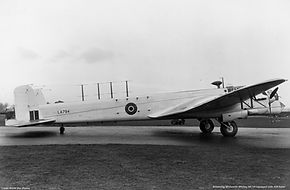
A further role for the Whitley was for the early experiments in dropping parachute troops and thus played a major part in the establishment of the “Red Beret” paratroop Units of the Army. It was also adopted as a glider tug being used for tests involving both the General Aircraft Hotspur and Horsa gliders. The most important parachuting operation was when twelve Whitleys dropped paratroops and radar specialists to examine the anti-aircraft radar installed by the Germans on the French coast at Le Havre. The radar experts photographed the apparatus, dismantled it, took away the vital parts, blew up the remains and escaped with the parts to the beach where they were picked up by the Navy.
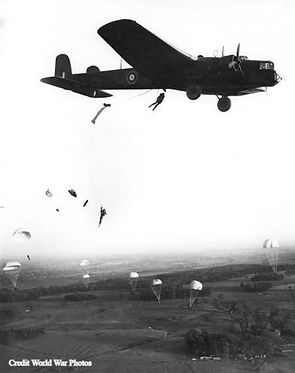
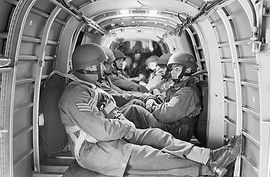

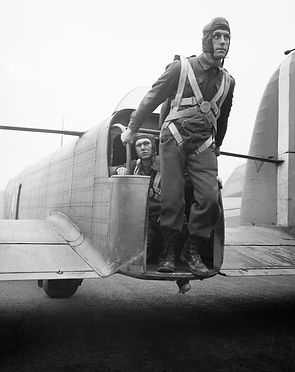
One of the more unusual uses of the Whitley was that fifteen Mk.Vs were transferred to BOAC for use as freighters, converted to this role by removal of gun turrets and bomb gear and the fitment of extra fuel tanks in the bomb bays. In this role they flew for seven hours through the night from Gibraltar to resupply Malta during the blockade of the island.
It is a tribute to the Whitley design, construction and undercarriage, that during its time in service its payload was increased from just over 1500 kg to more than 2700 kg while its range was increased from 2000 km to nearly 3700 km. The Whitley by its versatility and flying qualities is, deservedly in my view, considered as one of the most important aircraft produced during the Second World War.
The next image is of a Whitley Mk.V converted for use by BOAC, apologises for the poor quality.

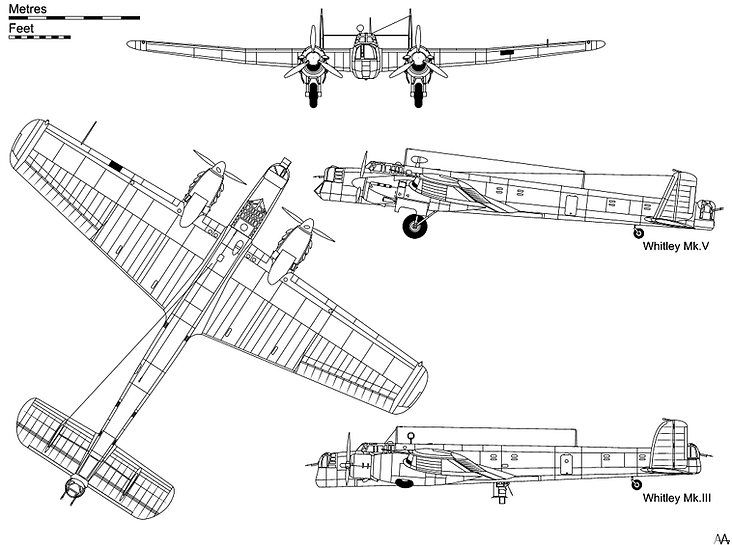

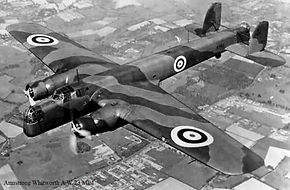
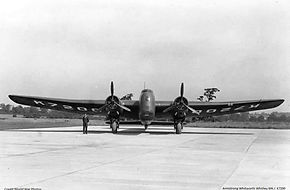

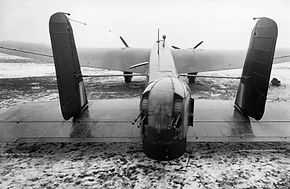
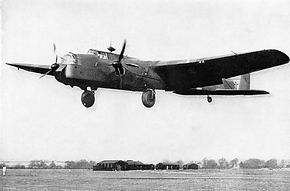
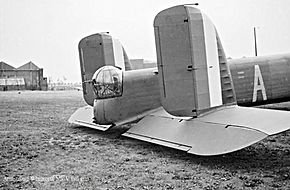
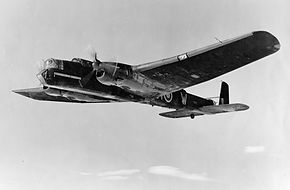
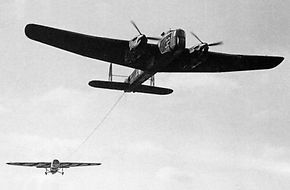
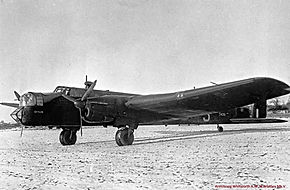
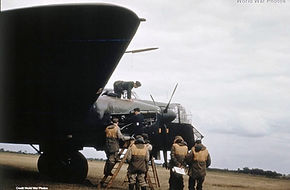


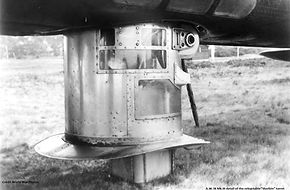
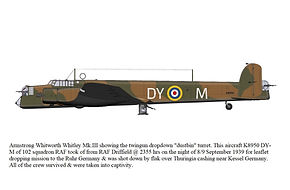
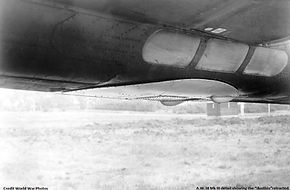
In time of war a plentiful and reliable supply of aircraft were necessary, making critical the task of those involved in their construction
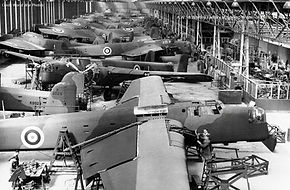
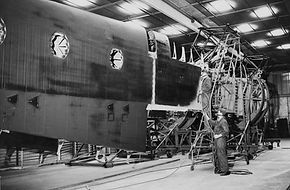
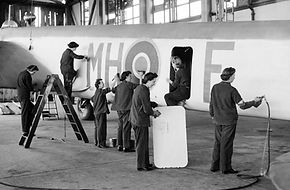
Meticulous maintenance of aircraft, weapons, and special equipment, by the ground crews, was vital.
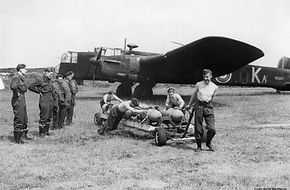

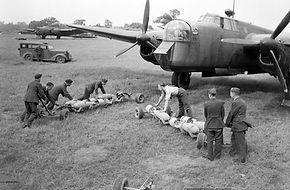

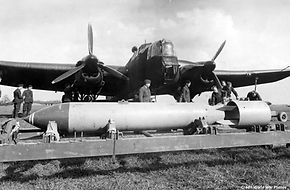

These final pictures depict the brave aircrews who at great personal risk took the fight to the enemy.

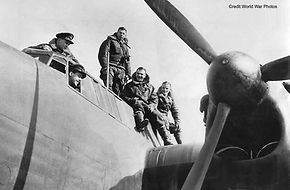_InPixio-min_edited.jpg)

